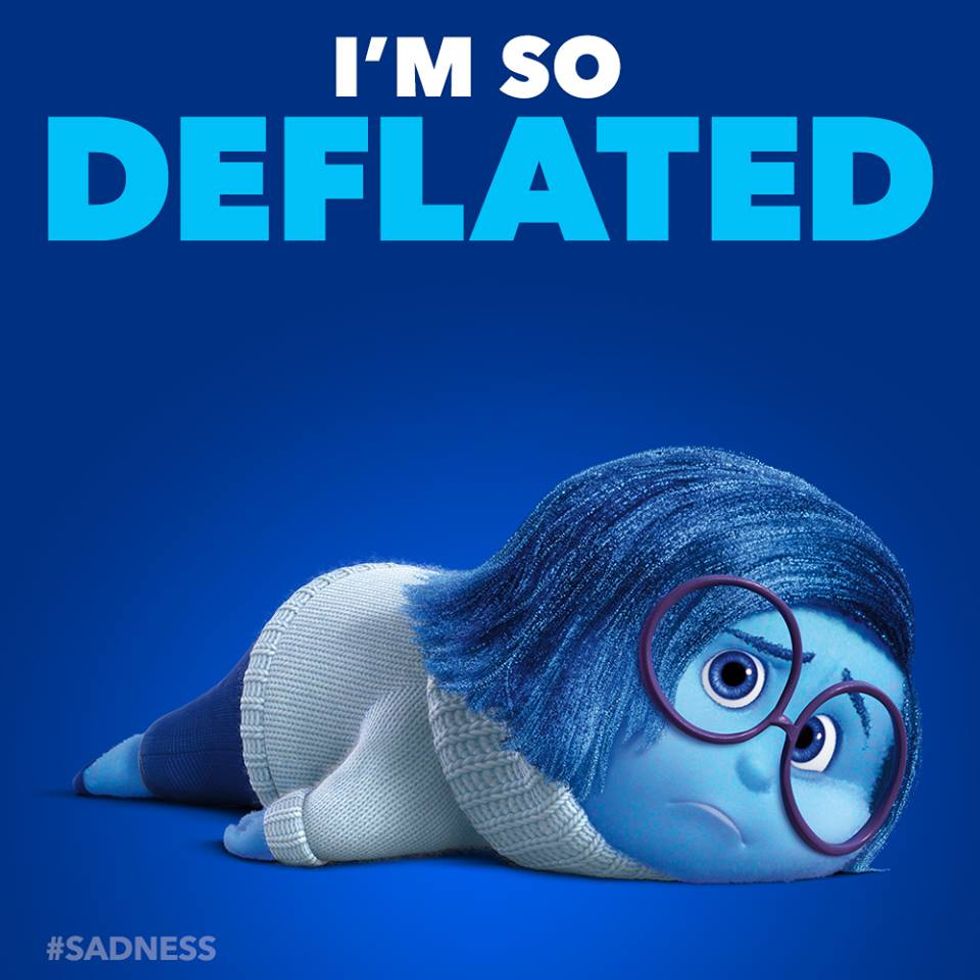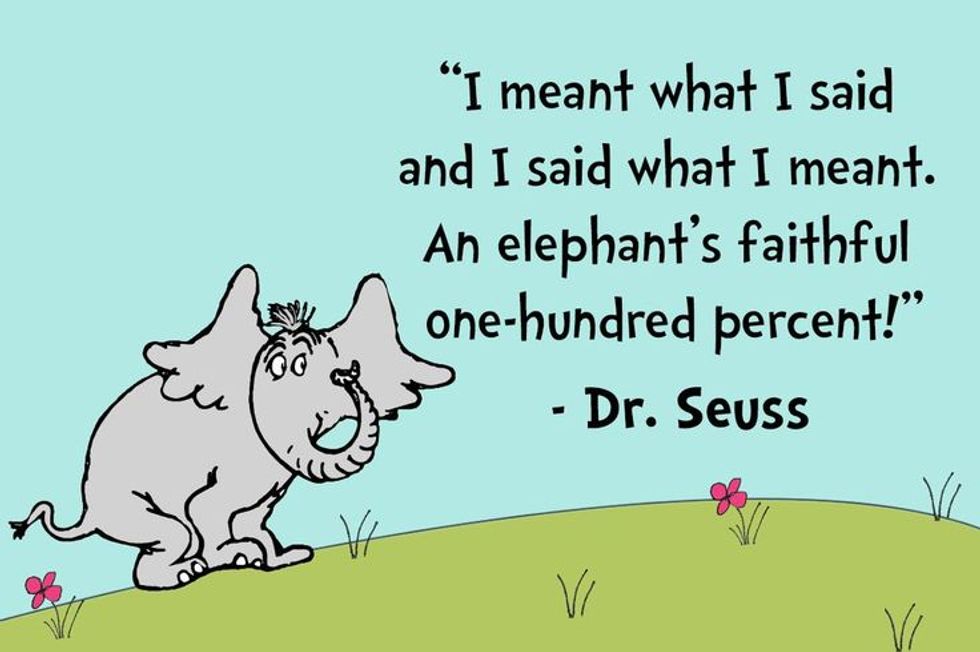You just came home from a mentally exhausting and Keurig-coffee-sustained semester at college. The house feels kind of like a familiar painting in that you discover new things here and there that you’d never seen before, but you still you know this painting and it is your favorite painting. Listless and restless all at the same time during that awkward in-between period between going to school and starting your summer job, you start to rummage through your room for something that is familiar but will hold your interest in that safe, I-don’t-wanna-do-new-things-right-now kind of way. Tracing your finger along your bookcase, you find an old and familiar part of your painting: Dr. Seuss’s "Horton Hears A Who."
Am I really going to read a children’s book? I’m going from Andrew Sorkin to Dr. Seuss in less than a week?
You did. And you probably saw "Inside Out" and "The Big Short" in the same couple of months too. There’s no shame.
But hold on. There’s a connection between "Inside Out"and "Horton." Think about it (whoa, that’s meta). When we first meet Horton he is enjoying the pool in the Jungle of Nool when he hears a small voice calling out for help, coming from what seems to be a speck of dust. He becomes inclined to help whoever is calling out for, after all, “a person’s a person, no matter how small.”
Horton then places the speck on a clover and protects it with his trunk, to the chagrin of a kangaroo family (who try to drown the speck), a pair of monkeys (who steal the clover), and an eagle (to whom the monkeys give the clover). During this process, Horton discovers that the tiny speck holds a vastly developed civilization called “Whoville” and that the voice was coming from its mayor, a “Who.” Horton will not stand by while these tiny people are mistreated by those who doubt their very existence. He is never aggressive in his tactics to protect them; while he disagrees with the other animals, “a person’s a person, no matter how small.”
After flying for a whole night with Horton chasing him, the eagle drops the clover in a giant clover field with the hopes that Horton will never be able to recover it. However, Horton spends all day looking through three million clovers, eventually finds the one carrying Whoville, and sets out to try to convince the other animals of the tiny town's existence so that they don’t put him in a cage and boil the clover (pretty sadistic for a kid’s book, no?). Horton tells the Mayor to get every member of Whoville to make as loud of a sound as they can so that the other animals might hear them and believe in their existence. Every citizen is being as loud as they can be and it still isn’t enough -- until the Mayor finds one little Who playing with a yo-yo and not making any noise. Once the Mayor brings the last Who outside to make noise, the sound is finally loud enough for the other animals to hear it, and they all become fully convinced of Whoville’s existence and promise to help protect it with Horton.
Combine this with the basic premise of "Inside Out." Every emotion in the brain is personified, and the interactions between them define the decision-making process of the person they belong to. Which one lags behind? Usually it’s Phyllis Smith’s Sadness who cannot see past the downside to things, but every emotion has its moment where it is a wrench in the gears.
Is Sadness or another emotion just the yo-yoing Who in your listless and restless undergraduate mind?
Looks like she just started finals week.
College is meant for exploration and opportunity, but often we are bombarded with options that flood our decision-making capabilities. “What if?”, “but also,” and “or I could...” are the start to more than half of your thoughts about everything from your major and your career to your dining hall and your weekend plans. How are we supposed to function if our Sadness, who knows what it feels like to answer these important variable questions wrong, cannot help but shine a light on the wholeness of some of our problems? What are we supposed to do when we are expected to be calm and collected but Anger can’t help but catch fire about everything from politics to that kid who leaves food leftovers in the shower? And speaking of food, how are we supposed to decide on lunch when Disgust is having a panic attack?
MAC AND CHEESE DOES NOT BELONG IN THE SHOWER DRAIN.
Our emotions are getting in the way of us being ourselves.
You feel lonely. You feel like no one understands you. You feel like you’re playing hide and seek with your work ethic, which is being crammed down your throat as the one thing that will win you a successful and fulfilling life. I don’t think that’s true. I think that you need to go find your yo-yoing little Who that just isn’t singing—and I think it’s one of your emotions. Find the root cause of what is making you feel that way and then add it to how you live your life. Emotions are not a thing to be “dealt with” like a pimple or a ketchup stain. They’re a part of your process and a very important looking glass into situations that only you have. Do you think it would be possible to study psychology without knowing what people feel and do when they’re sad and what they need to help them? How could you relate to someone trying to fight out of poverty as a social worker if you don’t know what anger feels like?
Every fleeting feeling that you have about something is like a Snapchat filter that only exists on your phone and helps you look at people in a new way. People deserve to be looked at in as many ways as possible, because you can never truly know everything about a person. By sympathetically looking at people, you can try to understand them. If we have all these little people in our heads we may as well listen to what they’re saying, right?
Remember: a person -- or feeling -- is a person, no matter how small.




















